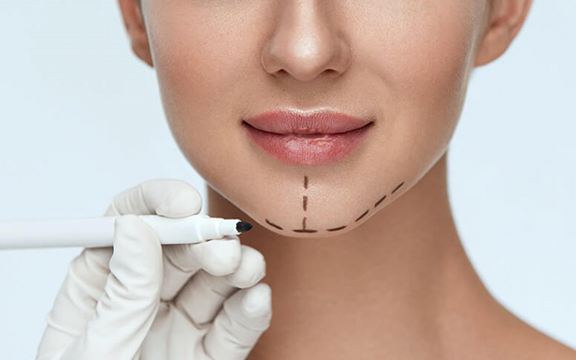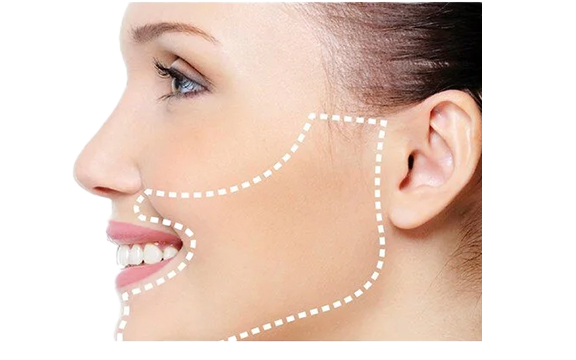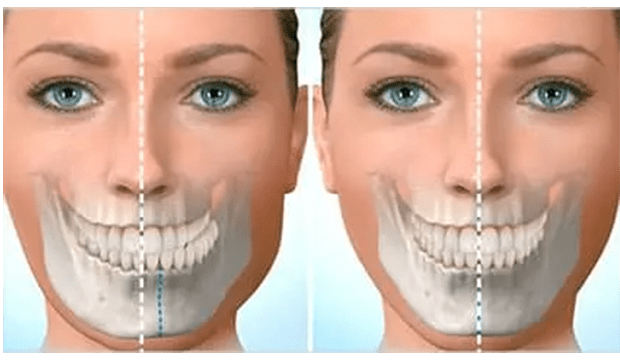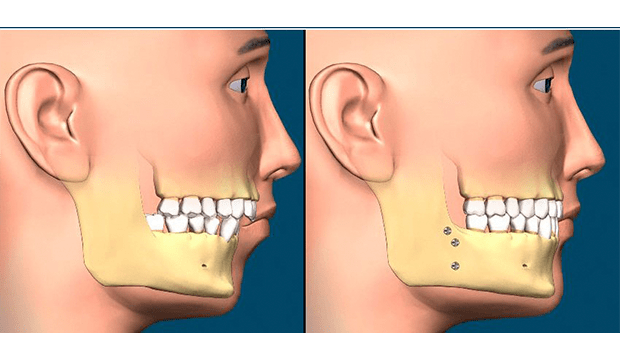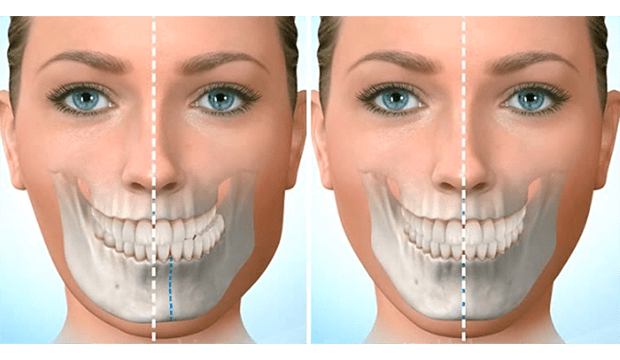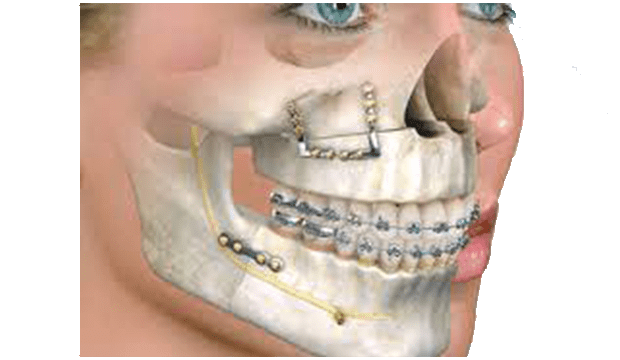Orthognathic Surgery; Also known as Double Jaw Surgery, these surgical interventions correct deformities (irregularities) in the jaw bones and include realigning the jaws and teeth to optimize chewing function. Making these corrections usually improves the aesthetic appearance of the face.
Jaw problems (skeletal problems) that cannot be solved by orthodontic treatment alone can be corrected with these interventions. In most cases, braces have to be worn during the preparation phase before surgery and during the recovery phase after surgery. These surgeries are a multidisciplinary treatment planned by orthodontists and maxillofacial surgeons together.
Orthognathic Surgery is more appropriate after the growth and development phase is completed, usually at the ages of 17-19 for women and 18-20 for men.
Orthognathic Surgery is applied in the following cases.
- When biting and chewing function cannot be achieved
- In the presence of problems with swallowing or speech
- In the presence of excessive wear and fracture of the teeth
- Open – Bite; In the presence of jaw closure problems where the molars (back) teeth touch each other but the front teeth do not touch each other (open bite)
- In the presence of facial asymmetries such as small jaws (micrognathia), underbites, overbites and crossbites
- If the lips cannot comfortably close completely
- Temporomandibular Joint (TMJ – jaw joint) disorders
- For the treatment of facial injury or birth defects
- It is applied in the presence of obstructive sleep apnea.
Risks – Complications
Orthognathic Surgery is generally safe when performed by an experienced oral, dental and maxillofacial surgeon, usually in collaboration with an orthodontist. However, like any surgery, this type of surgery also has risks and complications (unwanted results related to the operation).
Risks-complications of surgery may include
- Blood loss
- Infection
- Nerve injury
- Jaw fracture
- Return of the jaw to its original (old) position
- Dysfunction and problems with the jaw joint
- The need for more surgery
- Complications such as the need for root canal treatment can be seen in natural teeth.
After Surgery;
- Pain and swelling
- Requirement for nutritional supplements
- Inability to adapt to the new facial appearance immediately
In most cases, the orthodontist will place braces on your teeth before surgery. Braces help to level and align your teeth while preparing your teeth for surgery, usually for 9 to 18 months before surgery.
The orthodontist and maxillofacial surgeon work together to develop the treatment plan. X-rays, pictures and models of the teeth and jaws are part of the planning for this surgery. Sometimes, in cases where occlusion (the closure between the upper and lower teeth) cannot be fully achieved, selective mölleme (abrasion) or veneer treatment can be applied on the relevant teeth.
These operations are mostly performed by oral, dental and maxillofacial surgeons. The surgery is usually performed under general anesthesia. The operations have to be performed in a fully equipped hospital and require two to four days of hospitalization.
The surgery is usually performed intra-orally (inside the mouth), so there are no scars around the chin or mouth. However, sometimes small extra-oral (outside the mouth) incisions may be required.
The maxillofacial surgeon makes incisions (osteotomies) in the jaw bones to put the jaws in the correct position. Once your jaw movement is complete, bone plates, screws, wires and rubber bands are used to fix the bones in their new (planned) position. These screws, which are smaller than a bracket used for braces, integrate (fuse) into the bone structure over time.
In some cases there may be a need to add extra bone to the jaws. In this case, bone is usually taken from the anterior hip bone area called the iliac bone and fixed to the required area with plates and screws.
Jaw surgery is performed on the upper jaw, lower jaw, chin tip (genioplasty) or any combination of these.
Chin Tip Surgery (Genioplasty)
A genioplasty can correct a small chin (missing jaw). A small chin is often accompanied by a severely retracted lower jaw.
Typically, surgeons can replace the jaw and reconstruct the jaw during the same surgery. The surgeon cuts a piece from the front of the jawbone, moves it forward and fixes it in the new position with plates and screws.
Your doctor will give you instructions after the operation.
These usually include:
- Oral health should be given importance (mouth shower, use of soft brush)
- Avoid smoking and alcohol consumption
- Strenuous activities such as exercise and sports should be avoided
- Prescribed medicines should be used regularly
Initial jaw healing typically takes about six weeks after surgery, but full recovery can take up to 12 weeks. During this time the orthodontist finishes aligning your teeth with braces. The whole orthodontic process, including surgery and braces, can take several years. Retainers can be used to maintain the position of the tooth after the brackets are removed.
Results
- More balanced appearance of the lower and mid-face
- Improved function of teeth
- Improved sleep, breathing, chewing and swallowing
- Improvement in speech disorders
- Improved self esteem – Helpful in boosting self-confidence






